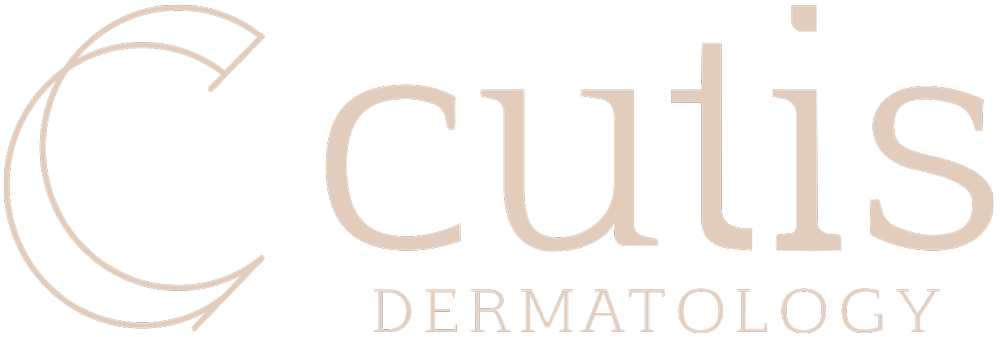Our hands are essential for daily life, but hand diseases can quickly make even simple tasks challenging. At Cutis Clinic Brisbane, we help restore movement and reduce pain, offering treatment for both common and complex hand conditions. Understanding your condition is the first step toward lasting relief.
Learn more about what types of hand conditions we treat:
- Arthritis
- Carpal tunnel syndrome
- Dupuytren’s Contracture
- Hand Trauma
- Mucous Cysts
- Ganglion Cysts
Our results speak for themselves
Types of hand diseases we treat:
Dupuytren’s Contracture
Hand Trauma
Mucous Cysts
Ganglion Cysts
More Than Just Function, We Focus on Form Too
Cutis Clinic has over 25 years surgical experience
At Cutis Clinic Brisbane, we understand that hand surgery isn’t just about restoring movement, it’s also about preserving appearance. Our approach blends reconstructive expertise with aesthetic precision, so whether you’re recovering from trauma, treating a chronic condition, or addressing age-related changes, we aim for results that look as good as they feel. From minimally invasive procedures to advanced surgical techniques, we tailor every treatment to your needs.
At Cutis Clinic, your hands are in expert hands. Dr Assad Bangash is a highly trained plastic, aesthetic, and reconstructive surgeon with specialised expertise in hand surgery and reconstruction. With over 25 years of surgical experience and training in Britain, Dr Bangash brings precision, skill, and compassion to every procedure, whether you’re seeking treatment for a hand condition or looking to restore both function and appearance.
Our hand surgery approach blends reconstructive expertise with aesthetic precision, so whether you’re recovering from trauma, or treating a chronic condition, we aim for results that look as good as they feel.
FAQs
What are the types of hand disease?
Hand diseases affect the bones, joints, tendons, and nerves, leading to pain, stiffness, or loss of function. Conditions like arthritis, carpal tunnel syndrome, ganglion cysts, tendon diseases, and Dupuytren’s contracture are common, while viral infections such as hand, foot, and mouth disease can also impact the hands. Symptoms range from mild discomfort to severe impairment, requiring tailored treatment approaches.
- Arthritis: Arthritis inflames the joints, making everyday tasks like gripping or writing difficult. Osteoarthritis and rheumatoid arthritis are the most common types, with treatments ranging from anti-inflammatory medications to surgery in severe cases.
- Carpal Tunnel Syndrome: Tingling, numbness, or sharp pain in the fingers may signal carpal tunnel syndrome, caused by compression of the median nerve in the wrist. Treatments include wrist splints, exercises, or, in advanced cases, surgery.
- Dupuytren’s Contracture: This condition causes the fingers to curl inward due to thickened tissue under the skin, limiting movement. While not typically painful, it can impact function, with treatment options including enzyme injections or surgery to release the tightened tissue.
- Hand Trauma: Hand trauma refers to any injury affecting the structures of the hand, including the bones, tendons, muscles, nerves, or skin. It can result from accidents, falls, sports injuries, or cuts.
- Mucous cysts (also called digital mucous cysts) are small, fluid-filled sacs that typically form near the base of the fingernail, often over the last joint of the finger (distal interphalangeal joint).
- Ganglion cysts are non-cancerous, fluid-filled lumps that commonly develop along the joints or tendons of the wrists, hands, or fingers. They can vary in size and may grow larger with repetitive use of the affected joint.
What is a viral hand disease?
While often linked to children, hand, foot, and mouth disease (HFMD) can affect people of all ages. This highly contagious viral infection spreads easily in close-contact settings like childcare centers. It causes mouth sores, rashes on the hands and feet, fever, and sore throat. Most cases are mild, but complications can occasionally occur, and diagnosis is usually based on symptoms and the rash rather than lab tests.
Is HFMD contagious?
HFMD spreads mainly through direct contact with infected people or contaminated surfaces. Activities like sharing utensils, touching shared objects, or close personal contact can raise your risk. Practicing good hygiene, especially regular handwashing, is key to preventing infection.
What is the treatment for HFMD?
There’s no specific cure for hand, foot and mouth disease (HFMD), but symptoms typically clear up within one to two weeks. Treatment aims to relieve discomfort through rest, plenty of fluids, and avoiding acidic foods that worsen mouth sores. Over-the-counter pain relievers can ease pain, and blisters should be left alone to heal naturally.
How to Approach Hand Disease?
Dealing with a hand disease starts with recognizing symptoms early and seeking proper medical care. Here’s a step-by-step approach:
- Identify Symptoms – Pay attention to pain, stiffness, numbness, swelling, or changes in hand function. Early detection can prevent worsening conditions.
- Consult a Specialist – A hand surgeon or specialist can diagnose the condition through a physical exam, imaging (X-rays, MRI, or ultrasound), and medical history.
- Understand Your Condition – Learning about your diagnosis helps in making informed decisions about treatment options, from conservative management to surgical interventions.
- Follow Treatment Plans – Depending on the condition, treatment may involve medication, physical therapy, bracing, injections, or surgery for severe cases.
- Adopt Preventive Measures – Protect your hands by maintaining proper ergonomics, avoiding repetitive strain, strengthening hand muscles, and practicing good hygiene to prevent infections.
Early intervention and the right treatment can help restore function and reduce discomfort, improving overall hand health.
How do I know if I need surgery?
Many hand conditions can be effectively managed without surgery, especially if caught early or in mild to moderate stages. Here are some common non-surgical treatments for hand diseases:
- Medications – Anti-inflammatory drugs (NSAIDs) or corticosteroid injections to reduce pain and swelling.
- Physical Therapy – Targeted exercises to improve strength, flexibility, and mobility.
- Splints & Supports – Braces or splints to stabilize the hand, relieve pressure, and promote healing.
When Is Non-Surgical Treatment Is Most Effective?
- Early-stage Conditions: When symptoms are mild, non-surgical options are often effective in managing the disease and preventing progression.
- Chronic, but Stable Conditions: Conditions like arthritis can be controlled with long-term non-surgical management, including medication and lifestyle changes.
- Non-Disabling Conditions: Many hand diseases, like mild carpal tunnel syndrome or tendonitis, can be managed effectively without surgery through therapies, splints, and medications.
What are surgical treatments?
For more serious cases, surgery may be the most effective solution. The type of procedure depends on the condition and may include:
- Joint Replacement Surgery: Commonly performed for advanced arthritis to restore mobility and reduce pain.
- Nerve Decompression: Used for conditions like carpal tunnel syndrome to relieve pressure on the affected nerve.
- Tendon Repair: Necessary when a tendon is torn or severely damaged, requiring reconstruction to restore function.
When should I consider surgical treatments?
Hand pain or stiffness might seem minor at first, but if it starts affecting your daily activities, it shouldn’t be ignored. From mild discomfort to more severe issues like ongoing pain, numbness, or limited movement, seeing a specialist early can be key to a faster and more effective recovery.
How can I prevent hand diseases?
While some hand conditions are unavoidable, you can take proactive steps to lower your risk:
- Stay Active – Regular stretching and strength exercises help maintain flexibility and hand function.
- Use Protection – Wearing gloves while using tools or engaging in physical work can prevent injuries that may lead to long-term issues.
- Maintain Hygiene – Frequent handwashing helps prevent infections like hand, foot, and mouth disease, particularly in children.
What if I just want to improve the appearance of my hands?
Our nurses and derms are highly skilled in all aspects of hand rejuvenation, including lasers & soft tissue fillers. To improve the appearance of your hands, we focus on texture, tone, and volume:
- Skin Texture: Treat wrinkles, sunspots, and pigmentation with lasers like Pico, Fraxel, or CO2, depending on the severity.
- Skin Tone: Tighten loose skin with lasers and collagen-stimulating fillers.
- Volume: Restore lost volume with collagen fillers or fat transfer to reduce the prominence of veins and tendons.
This customized approach targets the specific concerns for smoother, younger-looking hands. Learn more about our hand rejuvenation treatments here!


